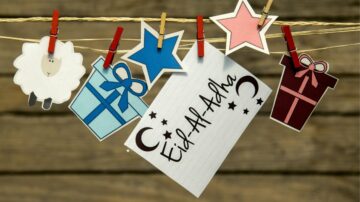Eid Al-Adha celebration, or the “Festival of Sacrifice,” is one of the most significant Islamic festivals celebrated by Muslims worldwide. It follows closely after Eid Al-Fitr and commemorates the willingness of Prophet Abraham (peace be upon him) to sacrifice his son Isma`el (peace be upon him) in obedience to Allah’s command. This festival is marked by the act of sacrificing an animal and is celebrated with various rituals and traditions that embody the spirit of submission and charity.
The Significance of Eid Al-Adha Celebration
The Arabic word “Adha” means “sacrifice,” which has its root in the word “duha,” meaning “light” or “illumination.” Eid Al-Adha occurs on the 10th of Dhul-Hijjah, following the completion of the annual Hajj pilgrimage in Saudi Arabia. On this day, Muslims around the world perform the sacrificial ritual to gain Allah’s pleasure, reflecting the spirit of sacrifice demonstrated by Prophet Abraham.
Steps to Celebrate Eid Al-Adha
1. Buy and Rear a Sacrificial Animal
A Muslim who can afford it should buy a sacrificial animal well before Eid. This could be a ram, goat, sheep, cow, or camel. The animal should be well taken care of, fed, and respected until the time of sacrifice. If a Muslim cannot afford an individual animal, scholars have allowed seven Muslims to share in the sacrifice of a cow.
2. Gain Knowledge of the Sacrifice Ritual
Muslims should educate themselves about the correct etiquette and steps of the sacrifice ritual. The basic guidelines include:
- Performing the sacrifice during the daytime.
- Using a very sharp knife to minimize the animal’s pain.
- Facing the animal towards the Qiblah (Ka`bah) in Makkah.
- Saying “Bismillah, Allahu Akbar” (In the name of Allah, Allah is the Greatest) before the sacrifice.
- Ensuring the animal’s blood is fully drained before skinning and cutting it.
3. Go for Eid Prayer After the Fajr Prayer
The entire household should awaken early, take a full bath (ghusl), wear new clothes, and proceed to the Eid prayer. The prayer consists of two units (rak`ahs), followed by a sermon (khutbah). The family should recite the “takbeer” on the way to the prayer ground.
4. Perform the Sacrifice
After returning home from the Eid prayer, the animal should be sacrificed. In Muslim-majority countries, animals are often slaughtered in public places, but in non-Muslim countries, designated areas with prior permission should be used.
5. Eat from the Meat
Muslims prepare and enjoy a variety of delicious meat dishes on Eid Al-Adha. The meat from the sacrificial animal is the first meal of the day.
6. Gift Meat to Relatives and Neighbors
Sharing fresh meat with neighbors, relatives, and friends is a sign of care and generosity. It is a common practice throughout the three days of Eid Al-Adha.
7. Give Meat to the Poor and Needy
Charity is a significant aspect of Eid Al-Adha. Many families dedicate several animals solely for feeding the poor and hungry. This spirit of sharing ensures that no Muslim goes hungry during Eid.
Conclusion
Eid Al-Adha is a time for Muslims to come together in celebration, reflection, and charity. By following the proper rituals and traditions, Muslims can embody the spirit of sacrifice and gain immense spiritual rewards. Let us celebrate Eid Al-Adha with a sense of unity, generosity, and devotion to Allah.
By Sadaf Farooqi

